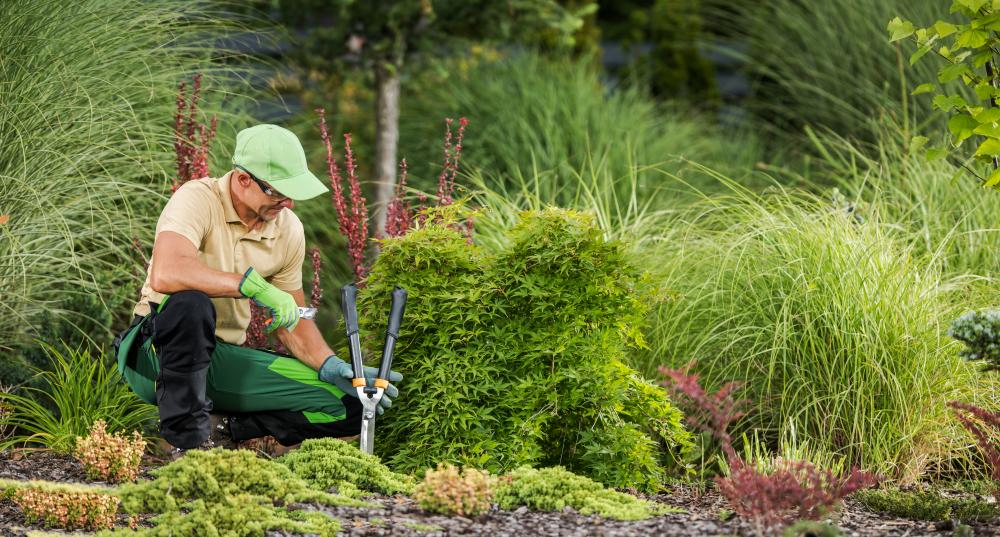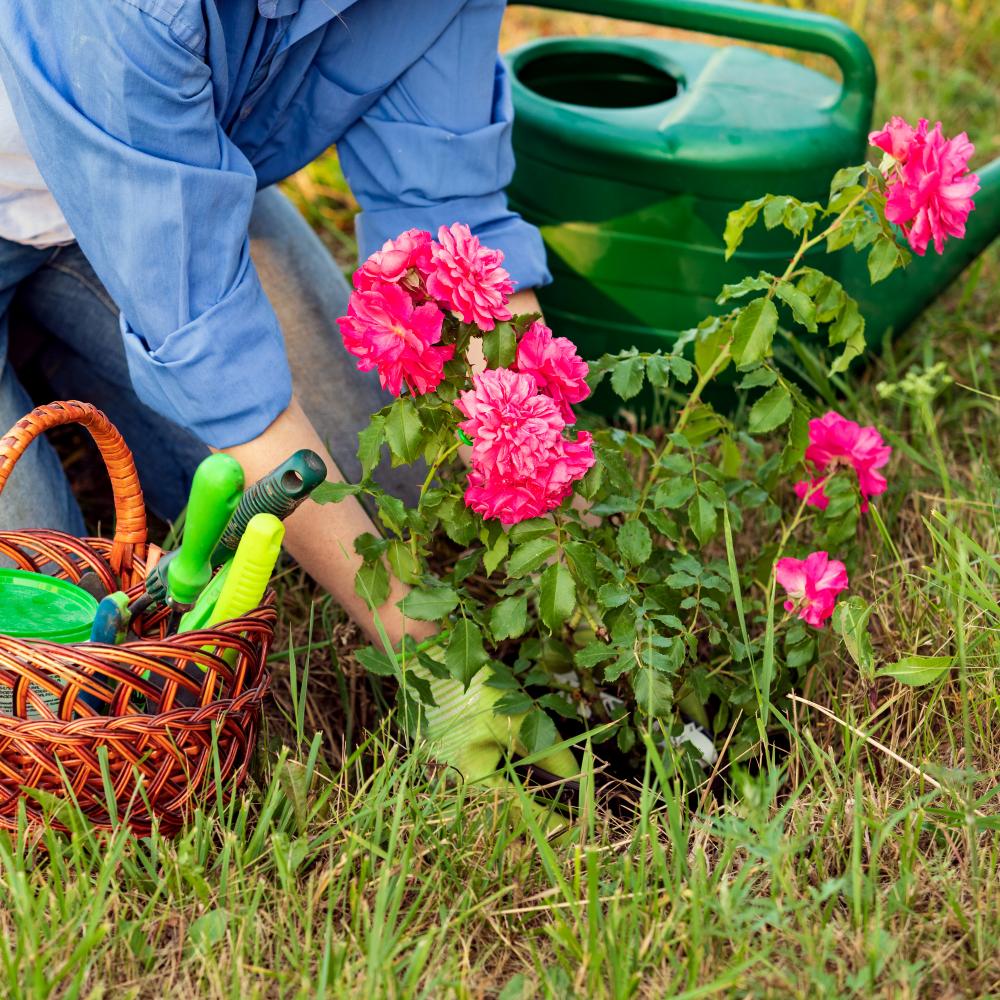
Introduction to Fine Garden Maintenance
At Stephanie Selig Landscape Design, our dedication extends beyond the drawing board, aiming to inspire DIY homeowners in northern Colorado to see their gardens not just as an extension of their homes but as a living, breathing entity. Fine Garden Maintenance is a journey, a way to connect with nature and transform your outdoor space into a personal sanctuary that thrives under your care and attention.
Understanding Fine Garden Maintenance
Fine Garden Maintenance is an art and science that goes beyond typical gardening practices. It encompasses a holistic approach to the care and cultivation of a garden, ensuring that it not only looks its best but also supports biodiversity, conserves resources, and provides a tranquil space for homeowners and wildlife alike. As a landscape designer, I’ve witnessed firsthand the transformative power of fine gardening. It’s about making informed decisions, understanding the ecosystem of your garden, and taking proactive steps to create a harmonious environment.
The Philosophy Behind Fine Garden Maintenance
The philosophy of Fine Garden Maintenance is rooted in the idea that a garden is a reflection of the natural world and should be treated with respect and care. This means considering the needs of each plant, the soil health, water usage, and how the garden fits into the broader ecosystem. A fine garden is a sustainable garden, one that evolves and adapts over time.
Practical Tips for Fine Garden Maintenance
-
Start with the soil: Healthy soil is the foundation of a healthy garden. Regularly testing and amending your soil to ensure it provides the nutrients your plants need is essential.
-
Select the right plants: Choose plants that are well-suited to your garden’s specific conditions. Consider native plants, which tend to be more resilient and require less maintenance.
-
Water wisely: Implement watering practices that conserve water and ensure your plants receive the hydration they need without overwatering.
-
Mulch matters: Mulching helps retain soil moisture, suppresses weeds, and adds nutrients to the soil as it breaks down.
-
Prune with purpose: Regular pruning keeps plants healthy, encourages growth, and can prevent disease and pest problems.
The Benefits of Fine Garden Maintenance
The approach does more than make your garden look beautiful; it creates a sustainable ecosystem that benefits both the homeowner and the environment. Fine Garden Maintenance can increase biodiversity by attracting pollinators, improve air and soil quality, and even reduce your carbon footprint by incorporating organic practices and reducing the need for synthetic fertilizers and pesticides.
Case Studies from Stephanie Selig Landscape Design
In my work, I’ve had the pleasure of transforming many gardens through the principles of Fine Garden Maintenance. One particular project that stands out involved a homeowner looking to create a pollinator-friendly garden. By selecting native plants and implementing sustainable garden practices, we were able to create a vibrant outdoor space that attracted bees, butterflies, and birds, contributing to local conservation efforts and providing the homeowner with a beautiful, lively garden to enjoy.
Overcoming Challenges in Fine Garden Maintenance
One of the initial challenges many of my clients face is the misconception that Fine Garden Maintenance is time-consuming and labor-intensive. While it does require a commitment, the key is in developing a garden that is well-suited to your lifestyle and environment. This means choosing low-maintenance plants, implementing efficient watering systems, and creating a garden design that simplifies upkeep.
Embracing Natural Change and Evolution in Your Garden
A fine garden is never static; it is always evolving. Understanding and embracing this natural progression allows for a more relaxed approach to garden maintenance. Observing the cycles of growth, dormancy, and rebirth in your garden can be a rewarding experience, providing a deep sense of connection to the natural world.
Conclusion
Fine Garden Maintenance is a journey, one that offers countless rewards for those willing to embark on it. At Stephanie Selig Landscape Design, we’re committed to guiding you through this process, providing the expertise and support you need to create a sustainable, beautiful garden that brings you joy for years to come. Whether you’re just starting out or looking to enhance your existing garden, we’re here to help you achieve your vision and ensure that your outdoor space flourishes.

What does fine gardening mean?
At Stephanie Selig Landscape Design, when we talk about fine gardening, we’re referring to an elevated level of garden care and design that transcends basic landscaping principles. It’s about creating and sustaining a garden that not only reflects the homeowner’s aesthetic and functional desires but also embraces environmental stewardship. Fine gardening involves a detailed understanding of plant varieties, soil health, and the local ecosystem to craft spaces that are not just beautiful but also sustainable and thriving. Imagine a garden that changes with the seasons, offers a habitat for wildlife, and provides a serene retreat for you – that’s fine gardening in essence.
What are fine gardening skills?
Fine gardening skills encompass a broad range of competencies, from the technical knowledge of horticulture to the creative flair of landscape design. Key skills include soil analysis, plant selection, garden planning, water management, eco-friendly pest control strategies, and the ability to adapt to the garden’s evolving needs. It’s also about having a keen eye for detail – noticing when a plant isn’t thriving, understanding the subtle cues that indicate soil health issues, or recognizing the perfect spot for a new element to enhance the garden’s overall beauty. These skills are honed over years of experience and continuous learning, something we at Stephanie Selig Landscape Design pride ourselves on.
What is the lowest maintenance garden?
A lowest maintenance garden is typically one that’s thoughtfully designed with sustainability and ease of care in mind. It often includes native plants that are well-adapted to the local climate and soil conditions, meaning they require less water, fertilizer, and protection from pests. Utilizing mulch to suppress weeds and retain soil moisture, and selecting drought-resistant plants can also reduce the need for regular maintenance. Moreover, incorporating hardscaping elements like stones or pavers can minimize weeding and lawn care. While no garden is completely maintenance-free, the goal is to create a harmonious, self-sustaining ecosystem that thrives with minimal intervention.
How do you maintain a good garden?
Maintaining a good garden involves regular attention and a proactive approach to plant care, soil health, and ecosystem support. It starts with understanding the specifics of your garden’s environment – sun exposure, soil type, local climate – and choosing plants that will thrive in those conditions. Regular soil testing and amendments ensure your plants get the nutrients they need. Proper watering techniques, like early morning irrigation to minimize evaporation and disease, are crucial. Pruning, mulching, and composting are also key practices. Remember, a good garden is not just about aesthetic appeal; it’s about creating a healthy, vibrant ecosystem.
What are the benefits of using native plants in fine garden maintenance?
Using native plants in fine garden maintenance offers numerous benefits, both ecological and practical. Native plants are adapted to the local climate and soil conditions, making them more resilient and easier to care for than many non-native species. They require less water, are less susceptible to pests and diseases, and provide essential habitat for local wildlife, including pollinators like bees and butterflies. Incorporating native plants into your garden supports biodiversity and helps to maintain the local ecosystem’s health. From a design perspective, native plants offer a sense of place and can help your garden blend seamlessly with the surrounding landscape.
How can common gardening challenges be overcome?
Overcoming common gardening challenges starts with observation and adaptation. For instance, dealing with poor soil can be mitigated by amending it with compost and organic matter, while pests and diseases may be managed through integrated pest management practices that emphasize natural and mechanical control methods over chemicals. Watering issues, whether too much or too little, can be addressed with the right irrigation strategy tailored to your garden’s specific needs. It’s also beneficial to choose disease-resistant plant varieties and implement companion planting to naturally deter pests. Remember, every challenge is an opportunity to learn more about your garden and how to care for it more effectively.
How can gardeners embrace the natural evolution of their gardens?
Embracing the natural evolution of your garden means accepting and encouraging change as an integral part of the garden’s life cycle. It involves letting go of the need for control and instead, observing and supporting the garden’s natural rhythms. This can mean allowing plants to self-sow, welcoming volunteer plants that pop up unexpectedly, and being open to the shifting balance of colors and textures as the seasons change. Adopting a flexible approach to gardening and being willing to experiment can lead to delightful surprises and a deeper connection with your outdoor space. It’s about enjoying the journey of growth and transformation that gardening offers, as much as the final outcome.
Resources
- University of Minnesota Extension – Yard and Garden – Explore a wide range of resources on yard and garden care, including soil health, plant selection, and sustainable gardening practices.
- National Wildlife Federation – Garden for Wildlife – Learn how to create a wildlife-friendly garden that attracts pollinators, birds, and other beneficial wildlife species.
- Oregon State University Extension Service – Gardening – Access expert advice on gardening, plant care, and sustainable landscaping practices from Oregon State University.
- Clemson University Cooperative Extension – Horticulture – Discover resources on horticultural practices, plant diseases, and pest management from Clemson University Cooperative Extension.
- University of California Agriculture and Natural Resources – Gardening – Find information on gardening techniques, plant selection, and sustainable landscaping from the University of California.

